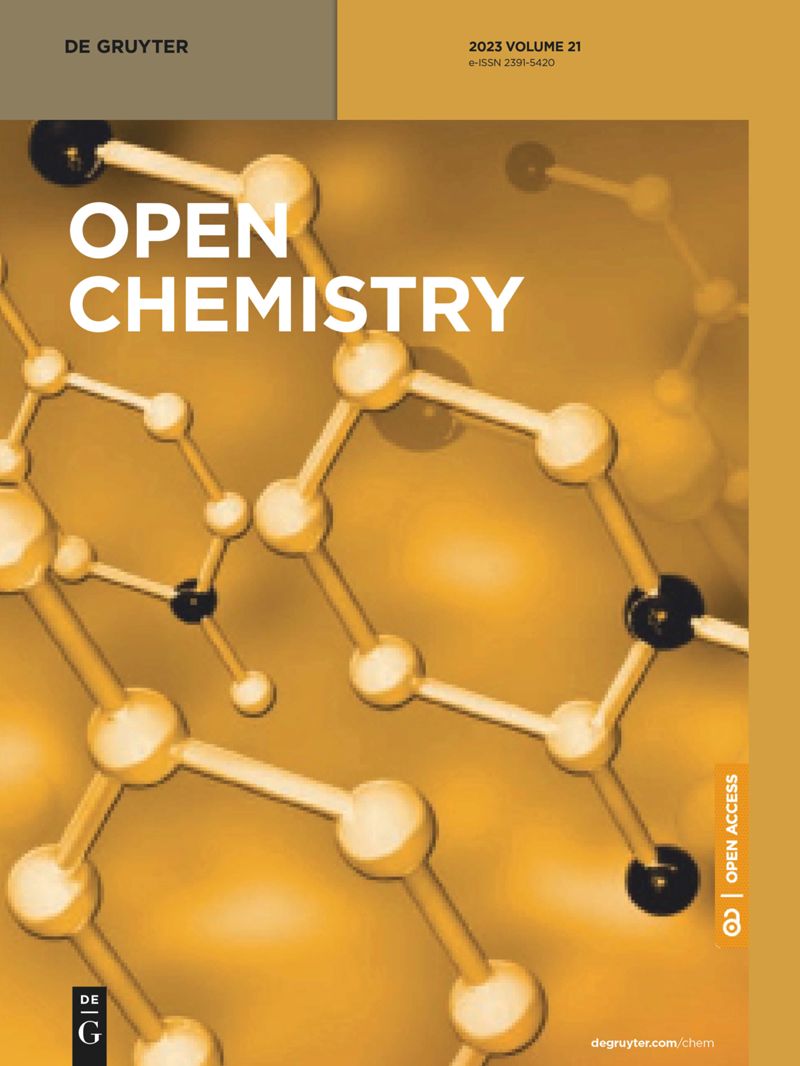大麻精油:化学成分、抗氧化性、抗微生物特性和急性毒性:体外、体内和硅学研究
IF 2.1
4区 化学
Q3 CHEMISTRY, MULTIDISCIPLINARY
引用次数: 0
摘要
本研究评估了大麻精油(CSEOs)的挥发性成分及其在体外、动物体内和硅学中的药理潜力。使用 2,2-二苯基-1-苦基肼(DPPH)、铁还原抗氧化能力(FRAP)、总抗氧化能力(TAC)和气相色谱-质谱法(GC-MS)测试了挥发性化合物的抗氧化能力。采用盘扩散法和微量稀释法评估了对细菌和真菌菌株的抗微生物活性,并采用 OECD 423 标准检测了对小鼠的急性毒性。结果表明,其主要成分为 β-茶叶烯(31.54%)、α-胡麻烯(12.62%)、β-月桂烯(4.83%)和 α-蒎烯(4.69%)。精油具有很强的抗氧化能力(DPPH 的 IC50 = 0.981 ± 0.059 mg/ml,FRAP 的 EC50 = 1.74 ± 0.05),TAC 为 0.101 ± 0.001 mg AAE/g。此外,它还对革兰氏阴性菌,如大肠埃希菌(11.33 ± 0.00 mm)、肺炎克雷伯菌(9 ± 0.00 mm)和绿脓杆菌(9.34 ± 0.00)具有显著的抗菌作用,其 MIC 值范围为 0.0052 至 0.0208 毫克/CSEO 对白色念珠菌和增殖镰刀菌具有抗真菌活性,活性水平分别为 18.66 ± 0.88 毫米和 41.89 ± 3.60%,MIC 为 0.39 和 0.013 毫克/毫升。毒理学研究证明,CSEO 对动物是安全的。Docking 确定了生物活性成分,并探索了抗氧化和抗菌特性。Docking 证明 bulnesol 和 champacol 具有指定的作用。本文章由计算机程序翻译,如有差异,请以英文原文为准。
Cannabis sativa L. essential oil: Chemical composition, anti-oxidant, anti-microbial properties, and acute toxicity: In vitro, in vivo, and in silico study
This study evaluated the volatile components of Cannabis sativa L. essential oils (CSEOs) and their pharmacological potential in vitro , in animal, and in silico . The anti-oxidant capacities of volatile compounds were tested using 2,2-diphenyl-1-picrylhydrazyl (DPPH), ferric reducing antioxidant power (FRAP), total anti-oxidant capacity (TAC), and gas chromatography-mass spectrometry (GC-MS). Anti-microbial activity against bacterial and fungal strains was assessed using disk diffusion and micro-dilution, and acute toxicity was examined on mice using OECD 423 criteria. The results indicate that the main components were β-caryophyllene (31.54%), α-humulene (12.62%), β-myrcene (4.83%), and α-pinene (4.69%). The essential oil showed high anti-oxidant ability (IC50 = 0.981 ± 0.059 mg/ml for DPPH, EC50 = 1.74 ± 0.05 for FRAP), and TAC of 0.101 ± 0.001 mg AAE/g. Additionally, it showed significant antibacterial action against Gram-negative organisms, such as Escherichia coli (11.33 ± 0.00 mm), Klebsiella pneumonia (9 ± 0.00 mm), and Pseudomonas aeruginosa (9.34 ± 0.00), with MICs ranging from 0.0052 to 0.0208 mg/CSEO demonstrated antifungal activity against Candida albicans and Fusarium proliferatum , with activity levels of 18.66 ± 0.88 mm, 41.89 ± 3.60%, and MICs of 0.39 and 0.013 mg/ml, respectively. In toxicological studies, CSEO proved to be safe for animals. Docking identified bioactive components and explored anti-oxidant and antibacterial properties. Docking proved that bulnesol and champacol caused indicated actions.
求助全文
通过发布文献求助,成功后即可免费获取论文全文。
去求助
来源期刊

Open Chemistry
CHEMISTRY, MULTIDISCIPLINARY-
CiteScore
3.80
自引率
4.30%
发文量
90
审稿时长
6 weeks
期刊介绍:
Open Chemistry is a peer-reviewed, open access journal that publishes original research, reviews and short communications in the fields of chemistry in an ongoing way. The central goal is to provide a hub for researchers working across all subjects to present their discoveries, and to be a forum for the discussion of the important issues in the field. The journal is the premier source for cutting edge research in fundamental chemistry and it provides high quality peer review services for its authors across the world. Moreover, it allows for libraries everywhere to avoid subscribing to multiple local publications, and to receive instead all the necessary chemistry research from a single source available to the entire scientific community.
 求助内容:
求助内容: 应助结果提醒方式:
应助结果提醒方式:


